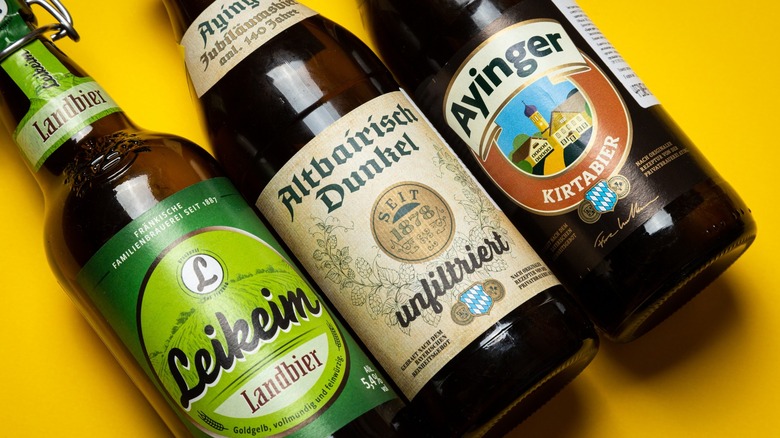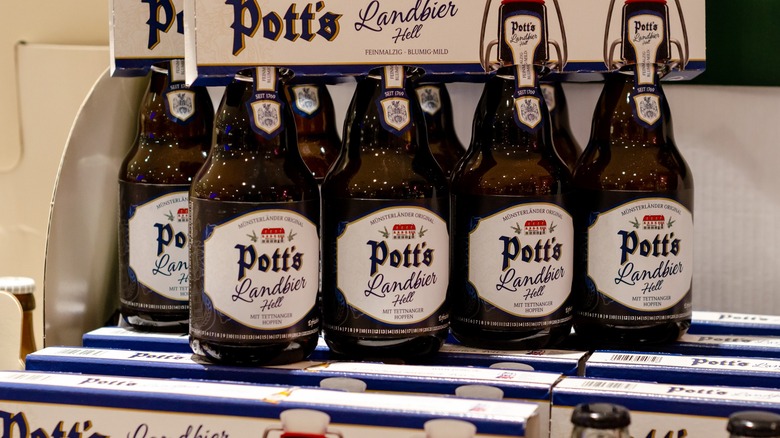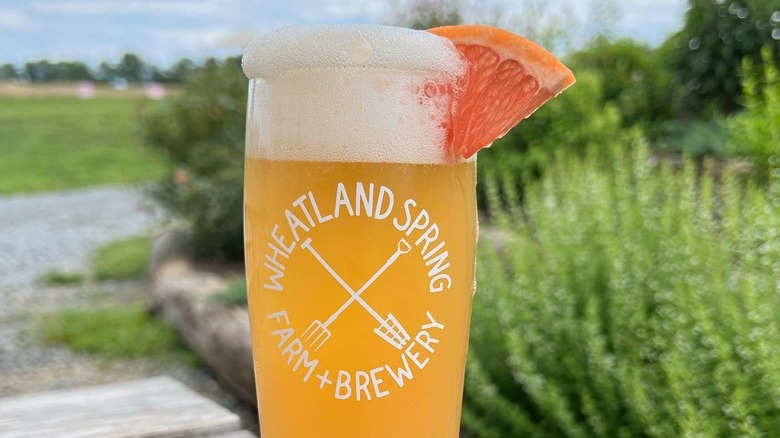What Is Land Beer And What Does It Taste Like?
Germany has contributed immensely to the culture of beer. From lagers to witbier to Kölsch, beer just wouldn't be the same without the ages-old brewing methods that have influenced other breweries worldwide. Landbier (land beer in the U.S.), however, is harder to place than the more recognizable German varieties. The term is used to denote more of a place of origin than a specific brewing practice and is both a representation of the highly local culture of historic German towns and villages and the modern popularization of regionalized craft beer.
German landbier translates to "country beer," and serves as a marketing label that local German breweries have adopted to define lines of beer that don't fit neatly into one category. The term doesn't actually describe a specific style so much as it does an identity, as "landbier" denotes local methods of brewing, similar to craft beer in the United States. According to the German Beer Institute (via YouTube), the brew "is usually not too hoppy," but that's as specific as it gets. Color and alcohol content vary, and "the term Landbier has more to do with branding a particular line of beer than with brewing a beer according to a style definition."
The looseness of land beer
There's really no one way to make a landbier since the term essentially describes unclassifiable brewing styles. If there's any shared trait, it's the fact that these German breweries use highly local ingredients to represent their own region without conforming to one particular style. Although the term can be found all over Germany, it seems to have originated in the region of Franconia, which claims the title of being the most brewery-dense area of the world. Due to the home-brewed Franconian nature of the drink, landbiers will often but not always come unfiltered and unpasteurized with low carbonation.
American breweries have tried to replicate this style, though it's arguable if they can be truly labeled as "landbiers." Pott's Landbier from Boston's Harpoon Brewery is made with German malt and hops in the "German brewing tradition," while Schilling Beer Co. in New Hampshire has both light and dark lagers that are labeled as landbier due to the use of local malt from Western Massachusetts.
If there's any American brewery that's the purest torch-bearer of the German landbier, however, it's Virginia's Wheatland Spring. The brewery's menu lists a host of beers that are difficult to define beyond a vague "ale" descriptor. That experimentation, along with Wheatland's reliance on ingredients literally farmed right outside the brewery, is probably the closest America comes to Franconia.
Wheatland Spring's land beer
Wheatland Spring is an "estate brewery," which means that its entire farmland is dedicated to growing ingredients for its beer. Owners Bonnie and John Branding explained to Food & Wine that they were inspired by their residence in Germany: "Driving up to a brewery in northern Bavaria, being able to park next to the ingredients that are going to be the next beer coming out of the brewery, it was something that I wasn't familiar with in the States," described Bonnie. The brewery uses water from a local underground source, hence the titular "spring" of Wheatland Spring, as well as its own craft malt, which is a rarer practice than it sounds like.
Even though craft beer is nothing new to American palettes, craft malt from local, independent suppliers is a newer concept. Microbreweries usually concentrate on local hops in order to define the "craft"-ness of their beers, acquiring their malt through a third-party supplier that produces the ingredient for a mass market. In contrast, Wheatland Spring (as well as a growing number of craft malters and brewers) malts its own barley or acquires its malt from nearby farms in a process that the brewery states is similar to winemaking. It's a forward-thinking approach to a tradition much older than big brewing.



